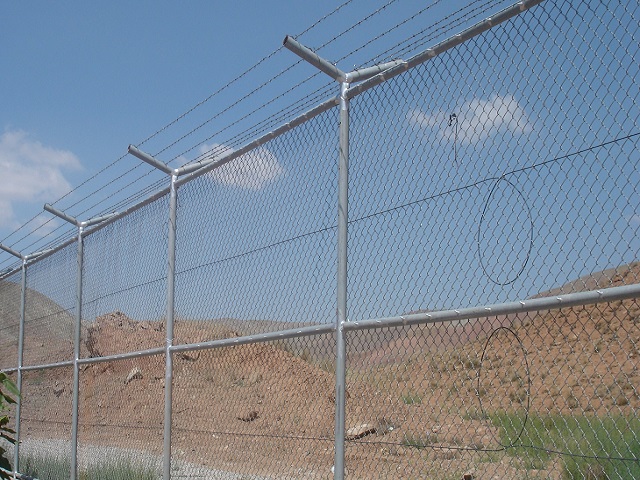Perimeter Intrusion Detection Systems in a Connected World
24 May 2023

In an increasingly interconnected and digitized world, ensuring the security of physical spaces is of paramount importance. Perimeter Intrusion Detection Systems (PIDS) play a crucial role in safeguarding critical infrastructures, sensitive facilities, and private properties. This advanced technology acts as an extra layer of defence, detecting and deterring unauthorized access attempts at the outer boundaries of a protected area. In this article, we will delve into the working principles, components, types, and benefits of PIDS, highlighting their significance in fortifying security measures.
The Working Principles behind a Perimeter Intrusion Detection System
Perimeter Intrusion Detection Systems utilise various technologies to detect unauthorised entry or intrusion attempts. These include:
- Physical Barriers: Fences, walls, and gates form the primary physical deterrent against unauthorized access. They are often equipped with sensors or detectors to detect any tampering or breaches.
- Electromagnetic Sensors: These sensors create an electromagnetic field or detect disturbances in existing fields. They can identify changes caused by human presence, vehicle movement, or any other intrusion attempts.
- Infrared Sensors: Infrared technology detects heat signatures emitted by humans or objects. They are sensitive to temperature variations and can differentiate between authorised and unauthorised movement.
- Microwave Sensors: Microwave-based PIDS emit high-frequency signals and analyse the reflections caused by objects or intruders. They can detect motion, speed, and direction, offering reliable detection capabilities.
- Fibre Optic Sensors: Fibre optic cables such as used in the Sabre II and SabreFonic systems from Remsdaq, are installed along the perimeter can detect vibrations or disturbances caused by physical interference, triggering alarms when a breach is detected.
What Does a Fence Protection PIDS Consist Of?
Perimeter Intrusion Detection Systems typically consist of the following components:
- Sensors: These are the primary devices responsible for detecting intrusion attempts. They can be based on various technologies such as electromagnetic, infrared, microwave, or Fibre optics.
- Control Unit: The control unit receives signals from the sensors and processes the data to determine whether an intrusion has occurred. It manages the overall operation of the PIDS, including alarm activation and response protocols.
- Alarms and Alerts: PIDS generate audible or visual alarms to alert security personnel or the system operator about potential breaches. They can also trigger notifications through email, SMS, or integration with other security systems.
- Communication Network: PIDS rely on a robust communication network to transmit data between the sensors, control unit, and the central monitoring station. Wired or wireless connections ensure seamless information flow and rapid response times. A BACnet interface also allows an interface and communication to a building management system.
Types of PIDS
There are various types of Perimeter Intrusion Detection Systems available, each designed to cater to specific security requirements. Some common types include:
- Fence-Mounted Systems: These systems integrate sensors directly onto fences or walls, detecting any attempts to climb, cut, or breach the physical barriers.
- Buried Cable Systems: Fibre optic or coaxial cables are buried underground along the perimeter. They detect disturbances caused by footsteps, digging, or vehicle movement.
- Volumetric Systems: Utilising technologies such as microwave or infrared, these systems create a virtual detection zone or field around the protected area. Any intrusion into this zone triggers an alarm.
- Barrier Sensors: These systems employ pressure-sensitive or vibration sensors installed on doors, windows, or other physical barriers. They detect attempts to open, break, or bypass these barriers.
The Benefits of PIDS Protection
Perimeter Intrusion Detection Systems offer several key benefits in enhancing security:
- Early Warning and Rapid Response: PIDS provide early detection of intrusion attempts, allowing security personnel to respond swiftly and prevent unauthorised access.
- Deterrence: The mere presence of PIDS acts as a deterrent, discouraging potential intruders from attempting unauthorized access.
- Scalability: PIDS can be customised and scaled according to the specific needs of different environments, ranging from small residential properties to large industrial complexes.
- Integration with Security Systems: PIDS can be seamlessly integrated with existing security systems, such as CCTV cameras, access control systems, and alarm systems, creating a comprehensive security infrastructure.
- Reduced False Alarms: Advanced PIDS technologies minimize false alarms by employing intelligent algorithms and filtering mechanisms, ensuring reliable and accurate detection.
- Compliance with Regulations: PIDS assist in meeting regulatory requirements for security in critical infrastructures, airports, government facilities, and other high-security installations.
Conclusion
Perimeter Intrusion Detection Systems play a crucial role in strengthening security measures by providing early detection and deterrence against unauthorised access attempts. By leveraging a combination of sensors, control units, alarms, and communication networks, PIDS enhance the security of critical infrastructures, commercial properties, and private residences. The evolving technological advancements in PIDS ensure improved reliability, reduced false alarms, and seamless integration with existing security systems. As the world becomes increasingly interconnected, the importance of PIDS in safeguarding physical spaces cannot be overstated. Implementing an effective PIDS solution can provide peace of mind, protecting assets, and ensuring the safety of individuals in a rapidly changing security landscape.
